Fraxel Laser Skin Resurfacing in New York
- 1. Fraxel laser benefits
- 2. Types of Fraxel laser
- 3. Fraxel laser downtime
- 4. Fraxel laser aftercare
- 5. Fraxel laser side effects
- 6. Fraxel laser results
- 7. Conditions treated by Fraxel laser
- 8. Best Fraxel laser doctor in NYC
- 9. Fraxel laser FAQ
- 10. Request an Appointment
- 11. New York Office Locations
Fraxel Laser Treatments – NYC & Long Island
The New York Cosmetic, Skin and Laser Surgery Center, headed by Dr. Cameron Rokhsar, is proud to have been the FIRST practice in New York and Long Island to offer Fraxel laser skin resurfacing in our offices in NYC and Garden City, Long Island. Dr. Rokhsar has performed more Fraxel Restore, Dual and Repair procedures in the past 20 years than any other practice or physician in the New York and Long Island area. Dr. Rokhsar has earned the Black Diamond Award for multiple consecutive years from Fraxel’s manufacturer, Solta, as having done the most Fraxel Treatments compared to any other physician in the United States. Dr. Rokhsar was involved in the development and clinical testing of the Fraxel laser system and conducted most of the clinical trials that led to the development and FDA approval of the Fraxel laser. Most protocols in use today for the treatment of wrinkles, scars, melasma, acne scars, stretch marks, pigmentation, brown spots, and sun damage, were developed by. Dr. Rokhsar along with the world-renowned laser dermatologist, the late Dr. Richard Fitzpatrick.
The Fraxel laser system is an innovative treatment that resurfaces the skin fractionally, a concept that revolutionized the field of laser resurfacing. This allows us to treat any skin color including Asian, African American, Hispanic, Indian, Middle Eastern Olive skin, and white skin. Fraxel also allows us to treat any body surface area including the face, neck, chest, hands, eyelids, arms, legs, abdomen, or any skin surface area which needs resurfacing, rejuvenation, or improvement. Fraxel technology works by triggering the body’s natural repair response to create new skin replacing old damaged wrinkled scarred skin. The indications for treatment with Fraxel are numerous and include lines, wrinkles, sun damage pigmentation, melasma, acne scars, surgical scars, burn scars, stretch marks, large pores, actinic keratosis (precancerous lesions), keratosis pilaris, and many other conditions.
Dr. Rokhsar was involved in the development of the Fraxel laser and is a Black Diamond award winner for performing the most treatments. Many dermatologists and plastic surgeons currently performing the Fraxel laser in the United States and around the world have been trained by Dr. Rokhsar, personally. Dr. Rokhsar introduced Fraxel to physicians in Asia (Taiwan, Japan, Hong Kong, The Philippines, Malaysia, Indonesia, Thailand), Europe (Germany, England), and South America (Brazil, Colombia, Argentina) in 2005. Dr. Rokhsar is a double board-certified in Dermatology and Dermatologic Surgery, and is an Associate Clinical Professor of Dermatology at Mount Sinai Hospital in NYC, Where he teaches lasers to Dermatology Residents. Dr. Rokhsar has trained the majority of dermatologists that use the Fraxel laser in the USA. If you want to get the best results from your fractional laser treatment, remember that it’s not just the laser that is important, but also the expertise and the experience of the doctor performing the Fraxel laser. Can an average street driver perform the same way driving a high-performance car as a professional race car driver? Choose your doctor carefully when it comes to your Fraxel Restore, Dual or Repair laser treatments!
Dr. Rokhsar published the first paper 1 on the treatment of wrinkles and sun damage, acne and surgical scars, as well as melasma with Fraxel laser.
Fraxel laser benefits
Both the Fraxel Restore, Dual and Repair lasers create tiny areas of micro-damage to various depths in different layers of the skin. The Fraxel Restore Dual uses a non-ablative wavelength. That means the tissue is only coagulated and not vaporized. This is called non-ablative fractional resurfacing. This stimulation causes skin cells to repair and generate firm, youthful skin tissue. The Fraxel laser causes redness and peeling just for a few days while the skin is healing. The Fraxel Repair is an ablative laser. The Fraxel Repair (CO2) uses a fractional beam of the CO2 laser. This is called ablative resurfacing or fractional CO2 laser resurfacing. The Fraxel Repair laser fractionally vaporizes the tissue. This means that there can be some rawness, bleeding, and oozing. The Fraxel Repair has 3-7 days of true medical downtime.
There are several advantages to fractional resurfacing with the Fraxel™ 3 Restore Dual laser and Fraxel Repair over older, fully ablative CO2 lasers.
These benefits include:
- Faster and easier recovery – a few days instead of two weeks.
- Minimal discomfort compared with fully ablative CO2 lasers.
- Improvement in the appearance of acne scars with minimal downtime.
- FDA-cleared 4 to treat the face, neck, chest, hands, and other body surface areas for Fraxel Restore Dual.
- It can rejuvenate upper and lower eyelids.
- Fewer side-effects.
- The procedure is performed only with the application of numbing cream. In some instances, the patient may choose to take Pro-Nox gas (nitrous oxide) for extra comfort.
- It can treat a wide range of conditions on and off the face including mild, moderate, and severe lines and wrinkles, melasma, sun damage, brown pigmentation, scars, acne scars, surgical scars, burn scars, stretch marks, precancerous spots, and many other conditions.
- It can treat all skin colors including white, brown, yellow, and black skin.
- It can treat the skin of all ethnicity types including African American, Asian, Hispanic, Indian, and Middle Eastern skin.
Types of Fraxel laser
Dr. Rokhsar treats patients with the full line of Fraxel laser systems in our offices in the Upper East Side and Midtown of Manhattan New York, and Garden City, (Nassau) Long Island. Dr. Rokhsar will advise you on what the best laser is to treat your specific condition or skin type. With access to the full range of the fractional lasers including Dual, Restore, and Repair, you will be presented with all your options in a realistic honest way. All Fraxel procedures are performed by Dr. Rokhsar personally for the best results.
- Fraxel Dual is a non-ablative laser, which is effective in treating hyperpigmentation, brown spots, sun damage, sun exposure, and melasma. The wavelength at 1927 nm, is ideal for superficial skin rejuvenation and pigmentation. One to 5 sessions may be needed for the best results depending on your specific skin needs or goals. The Fraxel Dual laser system has an attached cooling air system to make the treatment more comfortable with consistent and accurate cooling. The fractional laser session takes about 15-30 minutes.
- Fraxel Repair is a more powerful, fractional CO2 ablative laser. The Fractional CO2 beam of the Fraxel Repair laser is powerful for skin tightening and skin rejuvenation for those tough lines and wrinkles. By removing very small tiny microscopic zones of the patient’s epidermis (the outer layer of skin) and superficial dermis, new skin is formed which is less wrinkled, damaged, or scarred. Dr. Rokhsar is also among a few doctors in the world who can perform an advanced free hand 2mm beam fractional CO2 laser resurfacing with the Fraxel Repair. This technique, developed by Dr. Rokhsar, results in dramatic tightening and wrinkle reduction around the eyes, mimicking surgical upper and lower eyelid surgery. Dr. Rokhsar can also deliver dramatic improvement in deep wrinkles around the mouth with his unique techniques. The new skin formed after Dr. Rokhsar’s unique Fraxel Repair technique will be tighter, firmer, thicker, and smoother. In Dr. Rokhsars’ hands, the Fraxel Repair along with the 2mm CO2 laser beam has unparalleled, dramatic skin rejuvenation results, after only just one session.
- Fraxel Restore has a wavelength of 1550 nm and was the first Fraxel laser developed. The Fraxel Restore is also non-ablative. This means that skin only becomes red and flaky, but not oozy and raw. The 1550nm beam of the Fraxel Restore penetrates deeper than the 1927 nm beam of the Fraxel Dual, which makes it ideal for the treatment of acne and surgical scars. The Fraxel Restore laser, similar to the Dual also does not remove any tissue but rather coagulates. There is less recovery time with Fraxel Restore compared to Repair or the CO2 laser. After each session, patients experience some peeling, redness, and swelling, which resolve within a few days.
Fraxel Dual laser
Fraxel Dual is a type of laser used for skin resurfacing. It is effective in improving widespread brown sun spots, fine lines, texture, acne, surgical scars, and precancers called actinic keratoses. The Fraxel Dual is a relatively gentle laser that produces gradual results, and multiple treatments are usually required to achieve optimal results. The treatment is non-invasive, meaning that there is no cutting or needles involved. The Fraxel Dual laser works by penetrating the skin to encourage new collagen and elastin growth. The laser has two wavelengths, 1550 nm and 1927 nm, which are used to target different skin concerns. The 1550 nm wavelength targets deeper wrinkles, scars, large pores, and stretch marks. while the 1927 nm wavelength targets brown discolorations like sun spots and age spots as well as fine lines and wrinkles as well as texture.
The Fraxel Dual laser treatment is generally safe. The risk of infection and scarring even with aggressive settings is minimal. The recovery time for Fraxel Dual laser treatment is limited, with most patients being able to return to their normal activities within a few days. Some redness and swelling may occur after the treatment, which usually subsides within a few days to a week.
Fraxel Repair laser
Fraxel Repair is a fractional CO2 laser that is commonly used to treat aged or damaged skin with deep wrinkles, acne scars, hyperpigmentation, and laxity. It can also address fine lines, wrinkles, and pigmentation irregularities, improving overall skin complexion. This laser is ablative and fractional, meaning it produces small, precise areas of heat to penetrate deep into the skin, stimulating collagen production and allowing for new, healthy skin to grow in its place.
Unlike Fraxel Dual, which is a gentler laser that requires multiple treatments to achieve results, Fraxel Repair can produce more dramatic results with just one treatment. However, this comes at a cost of longer downtime (usually around 3-7 days) and an increased risk of infection and scarring. Patients experience redness, swelling, and crusting for 3-7 days after the treatment, but these side effects are typically temporary. Dr. Rokhsar has developed a combination protocol with Fraxel Repair and the 2 mm beam of the CO2 laser to deliver unparalleled results for wrinkles and skin tightening, The results around the eyes are often on par with surgical blepharoplasty or eyelid surgery and at times superior.
Fraxel Restore laser
Fraxel Restore laser is a non-ablative laser that uses microscopic light beams to generate micro-injuries on the skin. The Fraxel Restore laser device is gently moved over the areas that need to be treated. During the treatment, patients may feel only a cold sensation from the Zimmer cooling device, and there is no discomfort. Fraxel Restore is used to treat wrinkles, age spots, sun spots, melasma, actinic keratosis, stretch marks, deep acne, and surgical scars. The treatment requires a series of 2 to 5 treatments, which are spaced 2-6 weeks apart. After treatment, patients may experience redness, swelling, and peeling, which usually resolve within a week. Although Fraxel Restore results for tightening jowls and neck areas are not as dramatic as Fraxel Repair, some patients may see improvement in these areas. Fraxel Restore is also Dr. Rokhsar’s favorite laser for treating acne scars as well as other types of scars including surgical and burn scars. Treatment of large pores and stretchmarks is also successful with 3-5 sessions of the Fraxel restore laser.
Fraxel laser downtime
| Procedure | Fraxel™ Restore | Fraxel™ Repair | Fraxel™ Dual |
|---|---|---|---|
Treats |
|
|
|
Sessions |
3 – 5 | 1 | 3 – 5 |
Downtime |
3-7 days, mild swelling, peeling and redness | 3-7 days, rawness, swelling, oozing and redness. Additional 2-4 weeks redness | 3-7 days, mild swelling, flaking and redness |
During your consultation, Dr. Rokhsar helps you determine which is the best Fraxel laser for your goals. Our patients usually see maximum results at about three months post-procedure. Because the skin continues to naturally repair itself with new collagen and elastin production, which are the elasticity and tightening proteins giving structure to the skin, results will be gradual and the skin will continue to improve over the following weeks and months after treatment with both the Fraxel Restore Dual and Fraxel Repair Laser Treatments.
Fraxel laser aftercare
Immediately following the Fraxel Restore Dual laser treatment, the skin will feel hot, and you will experience swelling, redness, and throbbing in the treated area. This is normal. The heat sensations last for 1-2 hours. Redness, swelling, and peeling last for a few days. During this time, it is essential to avoid direct sunlight, as the skin’s barrier is more vulnerable and susceptible to external, ultraviolet, and microbial influences that can result in pigmentation and infection if not taken care of properly. Dr. Rokhsar recommendeds to use broad-spectrum sunscreen with a high SPF of at least 30 and avoid sun exposure for several weeks following the treatment.
In the first week after treatment, the skin will start to peel. It is better to leave it alone and let it recover by itself. Avoid scrubbing or picking at the peeling skin, as this can cause scarring or infection. Keep the skin moisturized and use a gentle, non-abrasive skin cleanser to wash the treated area. Avoid harsh rejuvenating products containing retinol or acids.
You should be able to go back to your regular skin care regimen 1-2 weeks after treatment. However, your skin will speak to you, and if your regular products irritate after a week, you should abstain from using them for another week or two. If you have a history of cold sores, Dr. Rokhsar will prescribe oral cold sore medication such as Valtrex (Valacyclovir) to prevent a cold sore outbreak.
Fraxel laser side effects
The most common side effects of Fraxel laser treatments are temporary pain, swelling, and redness. The heat or pain typically subsides within an hour after the fractional laser treatment. Redness and peeling typically subside within a few days after treatment. Peeling and dryness may also occur as the skin heals post-procedure. These are all expected reactions to the laser treatment.
In rare cases, more serious side effects can occur. For example, bacterial or viral infections can happen when the skin barrier is compromised during laser treatment. To minimize the risk of infection, it is important to choose an experienced physician who follows strict protocols. Dr. Rokhsar was involved in the development of the Fraxel laser and has done more treatments than any other doctor in the country.
Another rare but potentially serious side effect is scarring, which can result from treatments that are too aggressive or from provider inexperience. This is why it is essential to seek treatment from a highly trained and experienced laser surgeon who can customize the treatment to your skin type and concerns. Dr. Rokhsar has personally trained many of the early dermatologists and plastic surgeons who currently use the Fraxel laser.
Pigmentation issues are also possible side effects of Fraxel laser treatments. Post-inflammatory darkening of the skin can happen in darker-skinned individuals as a temporary side effect, but this is also rare and typically resolves on its own over time. It is important to follow proper aftercare instructions and to avoid direct sun exposure for several weeks after treatment to minimize the risk of pigmentation issues. If darkening is prolonged, Dr. Rokhsar will prescribe his proprietary skin bleaching regimens which is a combination of creams to bring back your skin to its original color typically within 2 months.
Fraxel laser results
Patient 1
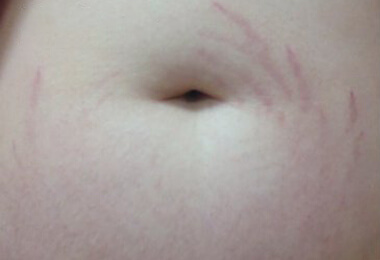

* Results may vary.
Patient 2
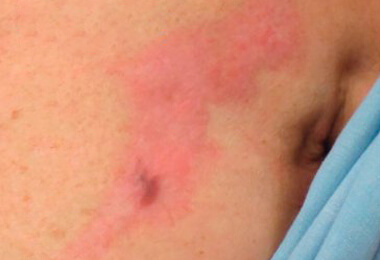

* Results may vary.
Patient 3
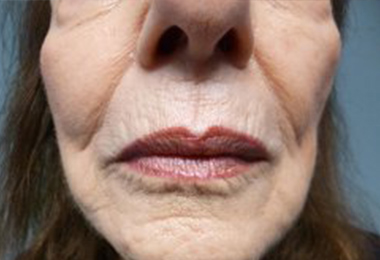
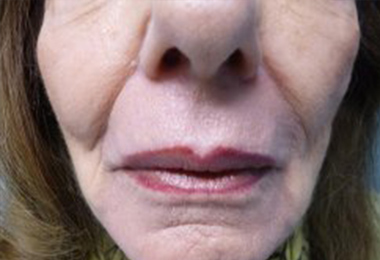
* Results may vary.
Patient 4
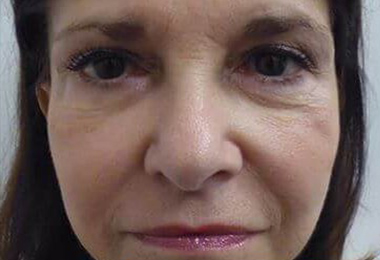
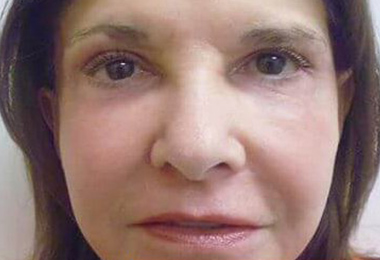
* Results may vary.
Patient 5

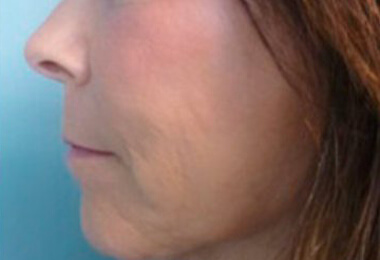
* Results may vary.
Patient 6
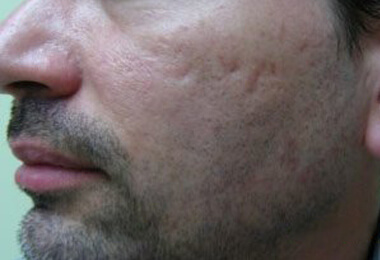
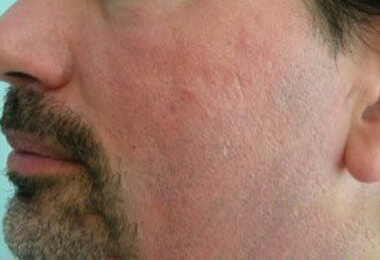
* Results may vary.
Patient 7
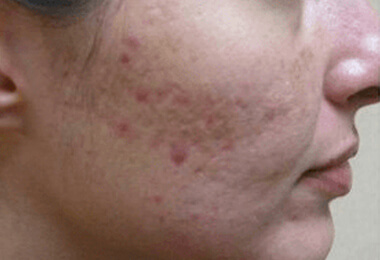
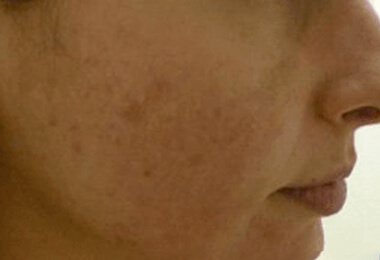
* Results may vary.
Patient 8
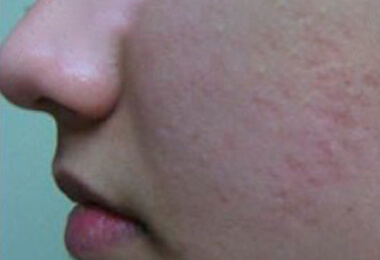

* Results may vary.
Patient 9

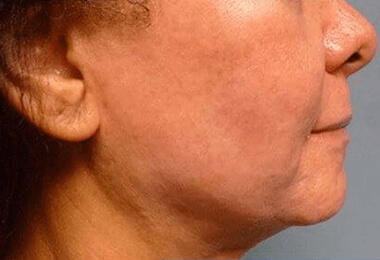
* Results may vary
Conditions treated by Fraxel laser
Fraxel is the original, gold-standard laser that introduced the concept of fractional laser resurfacing 2. It’s a great alternative to traditional laser skin resurfacing which is older technology with longer downtime. The Fraxel laser also revolutionized the treatment of many skin conditions which did not have any solution before the invention of the fractional laser technology.
The Fraxel laser can treat many conditions including, sun spots, brown spots, poor skin tone and texture, large pores, fine and deep lines and wrinkles, skin looseness or laxity, melasma, stretchmarks, acne scars, surgical scars, burn scars, and signs of aging on many skin types. Fraxel initiates the body’s natural healing process to create new, healthier skin which replaces skin imperfections with a brand-new skin. It also remodels the collagen tissue and boosts elastin to tighten the skin’s structure.
In our NYC and Garden City offices, the fractional laser is used for any body surface area including the face and neck, hands, chest, back, abdomen, eyelids, and hands. The following skin conditions can be treated with Fraxel:
- Fine lines.
- Deep lines.
- deep wrinkles.
- Stretch marks.
- Large pores.
- Uneven skin tone.
- Melasma.
- Acne scars.
- Surgical scars.
- Burn scars.
- Traumatic scars.
- Dog bite scars.
- Actinic keratosis.
- Unsmooth skin texture.
- Sunspots.
- Freckles.
- sun damage.
- Brown spots.
- Stretch marks.
- Keratosis pilaris.
- Scars from other laser procedures.
- Tummy tuck scars.
- Breast implant scars.
- Breast lift scars.
- Nipple scars.
- Liposuction scars.
- Wrinkled hands.
- Old looking hands.
- Facial wrinkles.
- Blepharoplasty scars.
- Facelift scars.
Fraxel laser skin resurfacing
Fraxel Restore Dual laser is a popular and effective treatment option for skin resurfacing. It is a non-invasive treatment that can improve the appearance of fine lines, wrinkles, age spots, sun spots, uneven skin tone and texture, and acne or other scarring. Fractional laser works by penetrating the skin and stimulating collagen and elastin growth, which can result in smoother, more youthful-looking skin.
Fraxel laser for wrinkles
Fraxel is a non-invasive laser treatment that is used to improve the appearance of wrinkles, fine lines, and other signs of aging on the face, neck, and hands. The laser creates thousands of microscopic treatment zones of thermal damage in the skin, which stimulates the body’s natural healing process and promotes the production of collagen and elastin, two essential proteins that keep the skin firm, smooth, and elastic.
Fraxel laser treatment can be an effective option for reducing the appearance of wrinkles and fine and moderate lines. It is especially beneficial for individuals who have mild to moderate signs of aging and are looking for a non-surgical solution that requires minimal downtime.
During the treatment, the laser is applied to the skin in a series of short pulses. Patients may experience some mild discomfort, but this can be managed with a topical anesthetic or numbing cream. Dr. Rokhsar also offers Pronox (nitrous oxide gas) for his patients who want something more than a numbing cream for increased comfort. After the procedure, patients may experience some redness, swelling, and peeling, which typically subside within a few days.
Fraxel laser for facial skin
Fraxel is a type of fractional laser that works by creating tiny, controlled injuries in the skin. This process stimulates the skin’s natural healing response and promotes the growth of new collagen and elastin. Over time, this can lead to improved skin texture, tone, and firmness.
The Fraxel laser can be used to treat a variety of skin concerns on the face, including fine lines and wrinkles, sun damage, pigmentation issues, and acne scars. The intensity and number of treatments needed will vary depending on the individual patient’s skin and concerns. Dr. Rokhsar was involved in the development and FDA clinical trials leading to the FDA approval of the Fraxel laser.
Fraxel laser for under eye
Fraxel laser is a popular cosmetic treatment used to address a variety of skin concerns, including under-eye bags, wrinkles, and sun damage. The Fraxel Dual 1550/1927 laser is typically used for under-eye treatments because of its high-accuracy laser with precise penetration to treat the under-eye skin in the right layer. The treatment works by targeting aging and sun-damaged skin with microscopic laser columns that penetrate deep into the skin to expedite the body’s remodeling of collagen. The laser treats only a fraction of tissue at a time, leaving the surrounding tissue intact, and resulting in minimal downtime after treatment. The treatment typically takes 20-25 minutes to complete, making it a quick and convenient option for patients. Dr. Rokhsar uses both the Fraxel Restore Dual and fractional CO2 laser resurfacing with the Fraxel Repair to treat eyelid skin issues including wrinkles, scars, and laxity.
Fraxel laser for lip lines
Lip lines, also known as smoker’s lines, are vertical wrinkles that appear around the mouth as a result of aging, smoking, or sun damage. There are several treatment options available to address this cosmetic concern, including the use of laser technology.
Fraxel is a fractional laser that is commonly used for skin resurfacing and the treatment of wrinkles, scars, and pigmentation issues. However, while the Fraxel laser can improve the appearance of fine lines and wrinkles on the face, it may not be the most effective treatment for lip lines. Dr. Rokhsar prefers to use the fractional CO2 laser (Fraxel Repair), for the treatment of deep lip lines and wrinkles around the lips.
Modest improvement in lip lines with the use of non-ablative fractional lasers like Fraxel Restore can be accomplished. This treatment involves multiple sessions of laser treatment to the area. The results still will never be as good as the CO2 laser or Fraxel Repair.
Fraxel laser for jowls
The fractional laser may not be the best option for treating jowls. Jowls are caused by sagging skin and loss of volume in the cheeks, which are not addressed by Fraxel laser treatment. While Fraxel can improve the texture and tone of the skin, it cannot significantly tighten loose skin.
Other non-surgical treatments, such as radiofrequency treatment with Thermitight or ultrasound skin tightening devices with Ulthera, may be more effective for improving jowls. The fractional CO2 laser (Fraxel Repair) does cause some tightening of the skin of the jowls. However, in cases of significant sagging or excess skin, surgical options such as a facelift or neck lift may be necessary to achieve optimal results.
Fraxel laser for enlarged pores
Fraxel laser treatment can help with large pores that are enlarged due to scarring from squeezing or sun damage. Also in certain individuals pores become larger as they get older. Large pores in these patients are due to genetics. In Dr. Rokhsar’s opinion, the Fraxel is the only laser that can truly effectively shrink pores. For large pores size, 3-5 sessions with the fractional laser may be necessary to get the desired outcome. Large pores have to be treated with aggressive settings with the Fraxel laser for great results.
From Dr. Rokhsar’s experience, the dermal improvements from Fraxel laser treatment for enlarged pores can be seen after the 4th or 5th treatment session. This improvement in pore size will continue to get better over the next 3-6 months after your last fractional laser session. The exact timeline for improvement in pore size may vary depending on individual skin type and condition, as well as the degree and extent of the large pores.
Fraxel laser for under eyes
The high-precision beam of the Fraxel laser is an effective treatment option for small areas of skin, like the under-eye area. Compared to other more invasive treatments, Fraxel laser treatment has minimal downtime and can produce dramatic results. The treatment is designed to create a younger-looking appearance in a single session, and it also features integrated cooling technology to help aid in patient comfort.
It is advised that retinoids should be stopped before undergoing Fraxel laser treatment for the under-eye area. This is because retinoids thin the skin, and Fraxel laser treatment can cause slight injury to the skin, which may lead to adverse effects if the skin is too thin.
Dr. Rokhsar prefers the Fraxel Repair over the Restore Dual treatment for the treatment of the under-eye skin and the upper and lower eyelid skin. One session of the Fraxel Repair can produce dramatic improvement of the texture and wrinkles in the skin of the upper and lower eyelids. The heat for the CO2 beam of the Fraxel Repair can also result in dramatic tightening of the upper and lower eyelid skin with only one treatment session. There will be about 3-7 days of recovery after the treatment with the Fraxel Repair around the eyes. Dr. Rokhsar uses metal intracorneal stainless steel eye shields to protect the eye during treatment with the Fraxel CO2 laser. The results are oftentimes better than a surgical eyelift or blepharoplasty in terms of skin tightening and wrinkles reduction. The other advantage is the Fraxel CO2 laser will also result in the thickening of the paper-thin skin of the aging lower eyelids restoring a youthful look. Dr. Rokhsar also treats the lower eyelids with the 2mm beam of the CO2 laser in conjunction with the Fraxel CO2, a protocol that he has developed. His results are unmatched by any other dermatologist or plastic surgeon. Remember it is not just the laser that is important. The experience and expertise of the doctor that is using this highly complex and technical laser are more important.
Fraxel laser for stretch marks
Fraxel laser is a safe and effective treatment for reducing the appearance of stretch marks. It works by delivering controlled energy to the skin in a fractional manner, stimulating collagen production and promoting the growth of healthy new skin cells.
The Fraxel laser is suited for treating both reddish and white stretch marks. It can be highly effective at reducing redness and inflammation as well as blending in the white streaks of white stretch marks. Fractional non-ablative lasers, such as Fraxel, are also effective for treating well-established stretch marks that are white or silver. Consult with a board-certified dermatologist to determine the most appropriate treatment for your specific case.
It is important to have realistic expectations when it comes to the results of Fraxel laser treatment for stretch marks. While it can significantly reduce the appearance of stretch marks, it may not eliminate them. However, most patients see a noticeable improvement in the texture and appearance of their skin. Dr. Rokhsar recommends at least 3 treatment sessions for stretch marks but some patients choose to do up to 6 sessions for maximal results with the Fraxel laser. Dr. Rokhsar offers the fractional laser treatment for stretch marks both in the Manhattan office in New York and in the Garden City in Long Island. Stretchmarks on any body surface areas including the abdomen or belly, arms, thighs, butt, chest or breast in all skin types and colors including black, Hispanic, and Asian skin can be successfully treated with the Fraxel laser.
Fraxel laser for acne scars
Fraxel laser can help reduce the appearance of acne scars, as well as other skin texture issues like fine lines, wrinkles, and sun damage. Dr. Rokhsar developed most of the Fraxel treatment protocols currently in use by physicians in the United States and around the world. The results of fractional laser treatment in Dr. Rokhsar’s hands are unmatched by other doctors.
One of the benefits of Fraxel Restore Dual is that it is a non-ablative laser, which means it does not remove the top layer of skin. This makes it a less invasive option than traditional ablative lasers, and results in less downtime and fewer side effects. Most patients have only 2-5 days of only social downtime but no true medical downtime after each Fraxel treatment. Dr. Rokhsar prefers the Fraxel Restore Dual for most patients over the CO2 or Repair for the treatment of acne scars due to the ease of treatment and the ease of recovery. Dr. Rokhsar can also use the fractional CO2 laser or the Fraxel Repair for acne scars if desired by the patient.
Fraxel laser for acne scars is typically done as a series of treatments spaced several weeks apart. The number of treatments needed will depend on the severity of the scarring, but most patients see noticeable improvement after 3-5 treatments.
Fraxel laser for surgical scars
Dr. Rokhsar published the first study of the treatment of acne and surgical scar with the Fraxel laser. Numerous subsequent clinical studies have confirmed Dr. Rokhsar’s study, that Fraxel can be highly effective in improving the appearance of both surgical and traumatic scars. Fractional laser treatment can help reduce the appearance of scars caused by a variety of procedures, including facelifts, breast augmentation, and tummy tucks, as well as scars as facial scars as a result of Mohs surgery or skin cancer surgery. The fractional laser is also highly effective in treating scars from trauma including scars as a result of motor vehicle accidents, dog bites, and burns among others. Three to 6 sessions of the Fraxel laser may be needed for optimal results depending on the severity of the scars.
Fraxel laser for dark skin
Fraxel Dual laser is effective in treating hyperpigmentation in darker skin types. The Fraxel Dual laser has two different wavelengths, the 1550 and low-density 1927, which can be used safely on darker skin types. However, as with any laser treatment, certain precautions and experience are necessary. It’s important to consult with a board-certified dermatologist or laser surgeon who has extensive experience in treating all skin colors and types. The Fraxel Dual laser is very effective in treating darkening of the skin in black and Hispanic skin. Treatment of brown and black skin with Fraxel takes skill and experience. Dr. Rokhsar has more experience than any other physician in the treatment of darker skin with the fractional laser.
Fraxel laser for hyperpigmentation
Fraxel laser is a popular treatment option for hyperpigmentation, which is a condition that causes the skin to darken in certain areas. The laser works by delivering focused, precise energy to the skin, which creates tiny, controlled injuries in the target area. This prompts the body’s natural healing process and encourages the production of new collagen, which can help to even out skin tone and reduce the appearance of hyperpigmentation. The epidermis is also resurfaced gently and gradually to get rid of superficial hyperpigmentation.
There are several different types of Fraxel lasers available, including non-ablative and ablative options. Non-ablative lasers are typically used for mild to moderate or severe hyperpigmentation. The ablative fractional CO2 laser like the Fraxel CO2 or the Repair is not recommended by Dr. Rokhsar for treatment of hyperpigmentation in darker skin types but is only reserved for lighter skin complexion Fitzpatrick type skin I to IV.
Fraxel laser treatment can cause temporary redness, swelling, and peeling in the treated area for a few days. Patients may or may not need to take time off work or other activities to recover depending on the nature of their work or social activities. Additionally, there is a risk of post-treatment hyperpigmentation, particularly in patients with darker skin tones when treating acne scars which require aggressive treatment settings. This usually resolves by itself within a few months. Dr. Rokhsar treats refractory cases with his proprietary bleaching regimen to get rid of any residual post-inflammatory hyperpigmentation.
Fraxel laser for melasma
Fraxel laser is one of the many treatment options available for melasma. Dr. Rokhsar was the first physician in the world to report on the treatment of melasma with Fraxel in the Journal of Dermatologic Surgery. His study led to the FDA-approval of Fraxel for melasma.
Dr. Rokhsar’’s study in Fraxel lasers for melasma found that 60% of the women saw 75% to 100% of their melasma clear up. The Fraxel Restore Dual is recommended for treating melasma, as the risk of causing spots to darken after treatment increases with Fraxel Repair. However, neither Fraxel Restore nor Repair should be used as first-line therapy against melasma.
While the Fraxel laser can be effective in treating melasma, it may not eliminate the condition. Patients may require multiple treatments, spaced several weeks apart, to achieve their desired results. Additionally, it is essential to protect the skin from the sun after treatment, as exposure to UV rays can exacerbate melasma. Patients should know that melasma is a chronic condition with no permanent cure. As melasma often recurs in the same patient, continued management of melasma may be required throughout a patient’s life.
Fraxel laser for brown spots
Fraxel laser treatment is highly effective for brown spots, and it can also improve the appearance of fine lines, wrinkles, scars, and uneven skin tone as well as brown spots. The number of treatments required depends on the severity of the hyperpigmentation, and patients can expect to see results within a few weeks of their first treatment. Most patients require between 1 to 3 treatments for brown spots, with each treatment spaced 2 to 6 weeks apart.
One of the benefits of Fraxel laser treatment for brown spots is that it has minimal downtime compared to other laser treatments. Patients can expect some redness, swelling, and mild peeling after the treatment, but these symptoms usually subside within a few days. They should avoid direct sun exposure and use sunscreen to protect the treated area.
Fraxel laser for sun damage
One of the main advantages of Fraxel laser treatment is that it is non-invasive, meaning there is no cutting or needles involved. This makes it a popular choice for patients who want to achieve younger-looking skin without undergoing surgery or injections. Additionally, Fraxel laser treatment can be performed in a single session, depending on the severity of the sun damage. With severe sun damage, multiple sessions are often required. The fractional laser is the most effective laser for reversing the signs of sun damage in the face, chest, neck, and arms. The treatment of precancerous spots due to sun damage called actinic Keratosis is an FDA-approved indication for Fraxel laser treatments.
Multiple treatments may be needed to achieve optimal results. This is because of the concept of gentle fractional resurfacing over time which allows for the sun-damaged skin on the face, neck, chest and arms to be replaced by brand-new skin with Fraxel laser treatments over time. The number of treatments needed will depend on the extent of the sun damage and the individual patient’s skin type and response to treatment as well as the anatomic area being treated.
Fraxel laser for rosacea
While the Fraxel laser is a safe and effective treatment for the treatment of many skin conditions including wrinkles, scars, and pigmentation, it is not specifically designed for the treatment of rosacea. Instead, laser treatments such as the Vbeam laser is the treatment of choice for treating rosacea symptoms. The Vbeam laser specifically targets the blood vessels in the skin that cause the redness and flushing associated with rosacea, while leaving the surrounding tissue unaffected.
Some patients’ rosacea symptoms become worse after treatment with the Fraxel laser. Patients with rosacea should have their rosacea under good control before undergoing Fraxel laser treatments. Dr. Rokhsar can use a variety of treatments including pills, creams, and lasers to prevent rosacea exacerbation in prone patients. Although the Vbeam laser can be very effective in treating rosacea, it is not a cure for the condition.
Fraxel laser for neck
The Fraxel laser is considered an effective treatment option for those looking to improve the appearance of fine lines, wrinkles, sun damage, and sagging skin on the neck.
The neck skin is delicate and cannot be resurfaced as aggressively as the face due to a paucity of pilosebaceous units which allow the skin to heal. Therefore, it is recommended that a less aggressive Fraxel treatment is used on the neck, such as the Fraxel Restore Dual, and not the Fraxel Repair. The Fraxel Restore Dual can be a great treatment option to address old and crepey skin of the neck as well as neck wrinkles.
Fraxel laser treatment for the neck typically involves the application of a numbing anesthetic cream for one hour before the 15-30 minute laser treatment. After the procedure, the skin of the neck may be red for about 5 to 7 days, and there may be some swelling and flaking during this healing time. Treatments can be spaced 2-6 weeks apart.
Fraxel laser for hands
Fractional laser can be an effective treatment for improving the appearance of old-looking hands as well as sun damage and brown spot on the hands. Fraxel is a fractional photothermolysis laser that can help reduce the signs of aging on the hands, including fine lines, wrinkles, sun damage, and age spots.
The Fraxel laser for hands is a skin resurfacing treatment that can help you get rid of acne scars, fine lines, and other imperfections. The procedure is similar to Fraxel for the face, but because the hands are smaller and have more delicate skin, it may take longer to heal. The treatment is performed in the office under local anesthesia. Usually, more than one session is needed to achieve optimal results in terms of reversing the sign of aging and sun damage on hands and fingers with the fractional laser.
Dr. Rokhsar is the best Fraxel laser doctor in NYC
Dr. Rokhsar has more experience using fractional lasers than almost any other doctor in the United States and around the world because he was involved in the development of the Fraxel laser. Most treatment protocols for the treatment of scars, wrinkles, sun damage, and melasma were developed by Dr. Rokhsar when he worked on the Fraxel prototype device. Many national and international TV shows and magazines have featured Dr. Rokhsar as a Fraxel expert. He has lectured and trained thousands of physicians domestically and overseas on how to apply the treatment protocols he developed to achieve the best results for their patients.
Furthermore, Dr. Rokhsar was the first to introduce the wide clinical application of this laser technology. He has been a featured speaker on this subject at the American Society for Dermatologic Surgery 5, American Academy of Cosmetic Surgery, American Society of Laser Medicine and Surgery, and the International Society for Cosmetic and Laser Surgeons 6 lecturing on the Fraxel laser. Being a respected thought leader in the field of laser resurfacing, doctors in New York and around the world refer challenging cases to Dr. Rokhsar for treatment.
Fraxel laser skin treatment reviews for Dr. Rokhsar
Compare Fraxel with other skin care procedures
CO2 laser vs Fraxel
CO2 laser resurfacing uses carbon dioxide to remove the top layer of the skin to treat sun damage, hyperpigmentation, wrinkles, fine lines, and scars. On the other hand, Fraxel is a brand of fractionated laser that creates micro-injuries on the skin to promote collagen production and reduce acne scars, hyperpigmentation, and fine lines.
While both CO2 laser and Fraxel can achieve excellent results, they have different levels of intensity and downtime. The CO2 laser is ablative, meaning it removes the entire outer layer of the skin and requires a more extended recovery period. In contrast, Fraxel is a non-ablative laser, meaning it only targets a fraction of the skin, leaving healthy tissue intact and requiring less downtime.
The choice between CO2 laser and Fraxel depends on your skin condition, concerns, and goals. If you have severe scarring, deep wrinkles, or significant sun damage, you may benefit more from a CO2 laser. However, if you have mild to moderate skin concerns, Fraxel may be a better option due to its less invasive nature and faster recovery time. In general, wrinkles and loose skin respond better to the CO2 laser. Both CO2 and the Fraxel laser are effective in the treatment of acne scars. But Issues off the face, for example on the neck, chest, arms, legs, or hands, are best addressed with the fractional laser.
Clear and brilliant vs Fraxel laser
Both Clear and Brilliant and Fraxel are non-ablative fractional laser treatments, which means they use targeted laser energy to improve skin texture and tone without damaging the skin’s surface. However, there are some differences between the two treatments that patients should consider when choosing which one is right for them.
Firstly, the intensity of the laser used is one of the most significant differences between the two treatments. Clear and Brilliant is often referred to as the “baby Fraxel” because it uses a less intense laser to target the skin’s superficial layers. This makes it a gentler option that causes minimal discomfort and requires no downtime. In contrast, Fraxel uses a more intense laser that penetrates deeper into the skin, making it more effective for treating deeper wrinkles, acne scars, and hyperpigmentation. However, the increased intensity of Fraxel means that it can cause more discomfort and redness, and patients may require some downtime for recovery. The results of the fractional laser are far superior to Clear and Brilliant for the treatment of all conditions including lines and wrinkles, skin color and tone, texture, pores, pigmentation, and rejuvenation.
Another difference between the two treatments is the number of treatments required to achieve optimal results. Clear and Brilliant typically requires a series of six treatments spaced four weeks apart, while Fraxel may only require one to three treatments to achieve the same or better results.
Lastly, both treatments have their unique benefits. Clear and Brilliant is excellent for maintaining healthy skin and preventing early signs of aging. It improves skin texture and tone, minimizes pores, and reduces the appearance of fine lines and hyperpigmentation. On the other hand, Fraxel is an excellent option for patients with more significant skin concerns, such as deep wrinkles, acne scars, and severe hyperpigmentation. Overall, Dr. Rokhsar and his patients prefer the Fraxel laser over Clear and Brilliant because of better results and more cost-effectiveness.
Microneedling vs Fraxel laser
Microneedling and Fraxel laser are both popular cosmetic procedures used to improve the appearance of the skin. While both treatments involve creating micro-injuries to the skin, they differ in their methods and outcomes.
Microneedling is a minimally invasive procedure where a dermatologist uses a device (Micropen) with fine needles to produce an array of tiny punctures in the skin. These tiny injuries stimulate the production of collagen and elastin, which can improve the texture and firmness of the skin. Microneedling is often used to address light to mild skin problems, such as fine lines, wrinkles, and mild scarring.
On the other hand, Fraxel therapy uses a specialized laser to penetrate the skin at a deeper level than microneedling. The laser energy targets specific areas of the skin, stimulating the production of collagen and promoting the growth of new, healthy skin cells. Fraxel laser therapy is often used to address more serious skin problems, such as acne scarring, sun damage, and deep wrinkles. Dr. Rokhsar feels that the Fraxel laser delivers better overall results than microneedling as the heat of the laser causes more collagen remodeling compared to mechanical needle injuries produced by microneedling devices.
In terms of recovery time, microneedling typically has minimal downtime, with common side effects such as redness and swelling subsiding within 24-72 hours. Fraxel laser therapy, on the other hand, can result in redness, swelling, and peeling for up to 3-7 days.
In terms of cost, both treatments vary depending on the extent of the procedure and the geographic location. Generally, Fraxel laser therapy tends to be more expensive than microneedling due to the specialized equipment and advanced technology used.
IPL vs Fraxel laser
IPL or Intense Pulsed Light uses a broad spectrum of light wavelengths to target and remove skin redness associated with rosacea, broken vessels, and acne. It can also remove age spots, liver spots, and other types of hyperpigmentation. IPL treatments are non-ablative, meaning they do not harm the top layer of the skin or epidermis.
On the other hand, Fraxel laser is a fractional technology that uses a specific wavelength of light to target deeper layers of the skin, addressing a range of skin issues such as wrinkles, acne scars, and hyperpigmentation. Fraxel laser can be ablative or non-ablative, depending on the specific wavelength used and the intensity of the treatment.
The main difference between IPL and Fraxel is the level of precision and depth of treatment. Fraxel can give more precise results than IPL because it can target only the selected areas on the skin, leaving the surrounding skin undamaged. Fraxel treatments are also considerably more expensive than IPL. Most expert laser dermatologists recommend Fraxel over IPL for treating wrinkles, acne scars, pigmentation, and sun damage.
Fractora laser vs Fraxel
Fractora uses a technology called radiofrequency (RF) energy to penetrate the skin and stimulate collagen production. RF energy is delivered through tiny needles that penetrate the skin and create microchannels, causing controlled micro-injury to the skin. This process triggers the body’s natural healing response, leading to collagen production and skin rejuvenation.
On the other hand, Fraxel uses a laser to deliver light energy into the skin, creating thousands of microscopic treatment zones. This process also causes controlled micro-injury to the skin, which triggers the body’s natural healing response and stimulates collagen production.
Both treatments can be effective in improving the appearance of the skin, but the choice between them depends on individual needs and goals. Fraxel is ideal for addressing pigmentation issues, fine lines, and texture irregularities. Most expert laser dermatologists agree that overall the fractional laser is a more effective treatment option for the treatment of wrinkles, scars, sun damage, loose skin, and pigmentation over Fractora.
Halo laser vs Fraxel
One of the main differences is in the types of wavelengths used. Both Fraxel and Halo can use non-ablative and ablative wavelengths. The Fraxel laser has been around much longer than the Halo and most expert laser dermatologists recommend the Fraxel over Halo for better efficacy and results for scars, wrinkles, and skin tightening. Remember that the Fraxel laser was the first technology to start the fractional resurfacing revolution. All fractional technologies tried to copy-cat the Fraxel laser technology later on. But no laser company including Halo was able to create a laser as effective as the Fraxel. While Halo uses both ablative and non-ablative wavelengths, it is a weaker and less accurate laser with less penetration and safety margin.
Both Halo and Fraxel can reduce pore size, but Fraxel appears more effective according to most expert laser dermatologists. Both treatments can also reduce mild to moderate signs of aging, but multiple sessions may be needed to achieve optimal results. Most laser experts agree that the Fraxel is more effective in the treatment of wrinkles and aging. In the end also remember that the experience of your doctor is of utmost importance when choosing a treatment, it is not just about the laser.
Genesis laser vs Fraxel
Genesis laser is a non-invasive laser treatment that uses a specific wavelength of light to stimulate collagen production and reduce redness and inflammation in the skin. This treatment is typically used to improve skin texture and tone, reduce the appearance of fine lines and wrinkles, and address conditions like rosacea and acne.
Fraxel is a type of fractional laser resurfacing treatment that uses microscopic beams of light to create controlled injuries in the skin. This process stimulates the skin’s natural healing process and encourages the growth of new collagen and elastin, resulting in smoother, clearer, and more youthful-looking skin.
Pixel laser vs Fraxel
Pixel lasers use erbium technology, which penetrates the skin tissue less deeply than Fraxel lasers. This means that Pixel lasers are better suited for treating superficial skin concerns. On the other hand, Fraxel are CO2 lasers that deliver more heat to skin tissue and are better suited for treating more advanced skin issues such as scarring and hyperpigmentation. Because the Fraxel dual laser has two distinct wavelengths, one 1550 nm which can penetrate deep, and the other 1927 nm which treats the superficial epidermis and dermis, the Fraxel laser can address all layers of the skin in one treatment, making it the more effective laser compared to Pixel.
Both lasers require multiple treatments for optimal results, and results vary depending on the intensity of treatment and the type of laser used. Fraxel is the number one laser resurfacing procedure in the world making it the gold standard according to most dermatologists.
Moxi laser vs Fraxel
Moxi uses a fractionated laser to create tiny perforations in the top layer of the skin, which stimulates the dermal repair process, reducing the appearance of brown and red spots caused by sun damage or aging. It is a gentler laser than Fraxel, with less downtime and fewer side effects, making it an ideal option for those looking for a maintenance treatment to keep their skin looking its best. However, most experts agree that the Moxi results don’t come close to the results that the Fraxel laser can deliver. Therefore, the Fraxel laser remains the preferred option by most dermatologists and patients.
ResurFX laser vs Fraxel
ResurFX is a newer technology that uses a 1565 nm wavelength laser to penetrate the skin and stimulate collagen production. One major advantage of ResurFX is that it only requires one pass with the laser, which translates to a shorter treatment time. The ResurFX laser also has a state-of-the-art scanner for non-sequential scanning that protects the skin from heat accumulation and overheating. Patients typically experience improved skin texture, tone, and color with minimal downtime. Fraxel laser remains the gold standard for resurfacing. Fraxel is still the most popular laser used by dermatologists around the world because of its high margin of safety and great efficacy.
PicoSure laser vs Fraxel
PicoSure is a versatile, FDA-cleared laser that was originally used to remove unwanted tattoos but has recently gained popularity as a skin rejuvenation treatment. It emits laser energy at a wavelength of 755nm, which targets melanin (pigment) in the skin. PicoSure uses a unique technology called PressureWave, which converts the laser energy into pressure waves that break up pigment particles into tiny fragments that can be naturally cleared by the body. It is also effective in treating fine lines, acne scars, and other pigmentation concerns. One of the advantages of PicoSure is that it has a non-thermal effect on the skin, which provides a gentle treatment with little downtime.
Fraxel is generally considered a more aggressive treatment than PicoSure, as it penetrates the skin more deeply and delivers more heat to the tissue. Picosure may be more effective in the treatment of tattoos and brown spots. But the Fraxel laser remains the king when it comes to the treatment of wrinkles, lines, pores, texture, loose skin, and hyperpigmentation.
Ultherapy vs Fraxel laser
Ultherapy and Fraxel laser are two different procedures that can be used to improve the appearance of the skin, but they use different technologies to achieve their goals. Ultherapy is a non-invasive, FDA-cleared procedure that uses ultrasound energy to lift and tighten the skin on the face and neck. It targets the deeper layers of the skin, including the Superficial Muscular Aponeurotic System, which was previously only addressed through surgery. In contrast, the Fraxel laser is a fractional laser that can be used to improve the appearance of fine lines, wrinkles, and scars. It works by resurfacing the skin, which targets pore size, skin texture, pigment, and reverses sun-damaged skin, and helps soften fine lines and wrinkles.
Ultherapy and Fraxel laser can be used together to achieve more significant results because they target different layers of skin altogether. For example, a patient might have Ultherapy to lift and tighten the skin on the face and neck and then have Fraxel laser to resurface the skin and improve the appearance of fine lines, wrinkles, and scars. Ultherapy is more effective in skin tightening because it targets the skin much deeper, at 3 mm and 4.5 mm, whereas the Fraxel beam targets the first 1.5 mm of the skin in its entirety. Ultherapy causes no change in the surface of the skin as it skips the first 3mm of the skin, delivering energy only to the layer below 3mm. Therefore no issues at the surface of the skin including lines, wrinkles, sun damage, scars, or pigmentation will get addressed by Ultherapy. Fraxel addresses all the issues at the surface of the skin including brown spots, pores, poor texture and color, pigmentation, and sun damage.
Thermage vs Fraxel laser
Thermage uses radiofrequency energy to stimulate collagen production and improve skin elasticity, while Fraxel uses laser technology to improve skin texture and reduce the appearance of wrinkles and fine lines.
Thermage is best for patients who want a subtle, natural-looking improvement in skin laxity and collagen production. It can be used on the face, neck, chest, and body and is particularly effective for patients with mild to moderate skin laxity. Thermage does not address any issues on the surface of the skin including lines, wrinkles, scars, poor texture, pore size, sun damage, and brown spots. While Fraxel addresses all the named issues, the heat of Fraxel also addresses loose skin to cause skin tightening as well.
Cool peel vs Fraxel laser
CoolPeel is a new laser with a name aimed at confusing the public. The manufacturer of the laser claims a cool beam. This is a marketing lie. By definition, a laser beam needs to get converted to heat for it to affect the skin. If the laser beam does not heat the skin, there will be no improvement in wrinkles, scars, or skin tightening. The manufacturer claims that the laser can give you results similar to classic CO2 lasers with little to no downtime. This is just a flat-out lie. There are no lasers that can even come close to the results of CO2 laser resurfacing, because the CO2 laser is the hottest, and it is heat that tightens skin and causes collagen remodeling. The manufacturer claims that the Cool Peel technique removes tissue with less thermal injury than traditional Fraxel treatments. This just means fewer results and less skin tightening. Don’t fall for the hype!
The Fraxel laser has been around for almost 20 years and no laser has come close to producing consistent amazing results with minimal risk for patients. The Fraxel laser will remain in a class of its own as a leader in the laser field.
BBL vs Fraxel laser
BBL, or Broadband Light therapy, is a type of intense pulsed light (IPL) treatment that uses a range of wavelengths to address a variety of skin concerns, such as acne, rosacea, and hyperpigmentation. It can also improve the appearance of fine lines and wrinkles caused by sun damage. BBL is generally considered safe and effective and can be a great option for those with mild to moderate skin concerns.
When it comes to choosing between BBL and Fraxel laser, it ultimately depends on your skin concerns and goals. If you have mild to moderate skin concerns and are looking for a non-invasive option with little downtime, BBL may be the better choice. If you have more severe skin concerns and are willing to undergo a more aggressive treatment with some downtime, Fraxel laser may be the better option. Most laser experts agree that the Fraxel laser is much more effective in addressing lines, wrinkles, sun damage, pore size, texture, brown spots, and pigmentation compared to BBL.
Tixel vs Fraxel laser
Tixel is a fractional laser skin resurfacing treatment that uses a handheld device tipped with titanium pyramids to encourage collagen production and rejuvenate the skin. Tixel employs a hot (400°C) metallic tip consisting of 81 pyramids that are rapidly advanced to the skin for a preset tip-skin contact duration. Tixel is a thermo-mechanical ablation technology that safely delivers controlled heat to the skin without burning the skin’s surface. The heating with Tixel is more superficial than with lasers, resulting in less pain. Tixel is not light-based, so protective eyewear is not needed, and it is possible to treat very close to the eyes. The results with TIxel are far inferior to the results that Fraxel can deliver to patients. That is why Fraxel remains the number one laser recommended by dermatologists in the United States and around the world.
Fraxel laser FAQ
What is a Fraxel laser?
Fraxel laser is a type of fractional laser used for skin resurfacing and rejuvenation. It works by penetrating the skin to encourage the growth of new collagen and elastin, which can improve the appearance of fine lines, wrinkles, scars, and pigmentation issues. Fraxel only targets a fraction of tissue at a time, leaving the surrounding tissue intact for rapid healing. There are two types of Fraxel lasers available: Restore Dual, which is non-ablative and does not create open wounds, and Repair, which is ablative and more powerful. Fraxel laser is a trademarked treatment created by Solta Medical in 2004. It is a popular tool for skin rejuvenation, and many dermatologists use it for anti-aging needs. Fraxel laser treatment can produce similar results to surgical options without being as invasive, and the healing process is often easier and quicker. The Fraxel Re:pair laser is the third generation laser and is the most powerful tool available for the treatment of facial wrinkles in the office setting. Dr. Rokhsar was trained by the inventor of the CO2 laser. He is considered an international authority on laser skin resurfacing procedures and has spoken on this subject all over the world. Dr. Rokhsar was involved in the development of the Fraxel Restore Dual laser and introduced Fraxel around the world in 2004-2005 to Australia, Asia, Europe, and 2003 South America. Dr. Rokhsar is an international authority on the Fraxel laser and has done more procedures than any other physician in the U.S. All the FDA clinical trials for the approval of the Fraxel laser were done by Dr. Rokhsar.
How does the Fraxel laser work?
Fraxel laser works by creating micro-injuries on the skin to stimulate collagen production and replace damaged cells with healthy skin tissue. Fraxel laser therapy is a non-invasive treatment that uses a device to deliver a laser beam divided into thousands of microscopic treatment zones that target a fraction of the skin at a time. There are different versions of the Fraxel laser that work differently. For instance, Fraxel Restore Dual is a non-ablative laser that heats up the tissue underneath the skin to stimulate collagen production while leaving the surface of the skin intact. The Fraxel Dual laser has two wavelengths, 1550 nm, and 1927 nm. On the other hand, Fraxel Repair is an ablative laser that removes the top layer of skin and is intended to treat more severe skin damage and deep wrinkles. The Fraxel Dual 1550/1927 laser treatment targets aging and sun-damaged skin with microscopic laser columns that penetrate deep into the skin to expedite the body’s remodeling of collagen. The laser treats only a fraction of the tissue at a time, leaving the surrounding tissue intact. Fraxel laser treatments are a treatment option for anyone experiencing mild to medium-depth acne scars, and to promote the growth of new skin cells, the Fraxel laser treatments do wound the skin. Overall, Fraxel laser works by using laser beams to target specific areas of the skin to produce healthy tissue, which replaces damaged skin cells, leading to smoother, healthier, and younger-looking skin.
Which wavelengths does the Fraxel Dual use?
The Fraxel Dual contains two wavelengths. The lasers use the traditional non-ablative 1550mm Erbium fiber laser to penetrate deep into the tissue. This wavelength is ideal for treating wrinkles, scars, and loose skin. The addition of the 1927mm Thulium fiber laser offers superficial or cosmetic treatment as well.
This benefit of the 1927 wavelength is that uneven pigment fades away more quickly. Often termed the “microscopic facelift,” these two wavelengths work together to create tiny wounds in the deepest layers of the skin. The body naturally refreshes and rebuilds the skin. This causes the development of new collagen and elastin, creating new skin from the inside out.
What is a Fraxel laser good for?
Fraxel is a popular treatment for improving the appearance of various skin conditions. Some of the benefits of Fraxel include improvement in the appearance of fine lines, wrinkles, age spots, uneven skin tone, texture, unwanted pigmentation, stretch marks, acne scars, surgical scars, burn scars, and melasma. It also causes skin tightening.
The treatment creates microzones of injury to stimulate collagen and elastin, which helps resurface the skin. Fraxel can be used to treat acne scarring, sun damage, and other skin damage, and it is a great choice for most people looking to heal their acne scars and regain their self-confidence. Fraxel-type laser treatments are ideal for anyone aged 16 to 90 who wants to improve skin texture and resurface their skin. However, Fraxel is not recommended for people with active acne, rosacea, infections, or certain medical conditions. It’s best to consult with Dr. Rokhsar to determine if Fraxel is the right treatment for you.
Can Fraxel be used on the body?
Fraxel can be used on the face, neck, chest, arms, hands, belly, back, and legs. While Fraxel can be used in any body area, Dr. Rokhsar may recommend a different treatment option depending on your specific conditions or goals.
Is Fraxel laser painful?
While some patients say that the procedure is not painful at all, you may experience minor discomfort during the treatment. The amount of pain you experience will depend on your pain tolerance. Dr. Rokhsar uses a proprietary numbing cream not available at any other offices. With our special numbing cream, most patients report that the procedure is perfectly tolerable. In rare instances, if an individual wants something more than numbing cream, we offer Pronox nitrous oxide gas for a small additional fee.
Patients most commonly describe the Fraxel laser treatment as a slightly hot or stinging sensation. Before your procedure, we first apply a special numbing cream developed by Dr. Rokhsar which makes your session comfortable.
What to avoid before the Fraxel laser?
Before undergoing a Fraxel laser treatment, there are certain things that individuals should avoid to ensure optimal results and reduce the risk of side effects.
Here are some things to avoid before Fraxel laser:
- Harsh skincare products: Avoid skincare products that contain glycolic acid, Vitamin C, benzoyl peroxide, retinoids, or salicylic acid, as these can be too harsh on the skin and interfere with the healing process after the treatment. This includes cleansing and exfoliating facial brushes as well. Dr. Rokhsar advises discontinuing these products 3-5 days prior to laser appointments. If a patient has active acne, it’s best to postpone the procedure until the breakouts have cleared.
- Tanning: Avoid any artificial tanning procedures for at least one month before the Fraxel treatment, as tanned skin cannot be treated with Fraxel repair. Also, wear sunblock and avoid exposure to direct sunlight as much as possible in the weeks before and after the Fraxel laser treatment to allow for proper healing and protect your skin.
- Medications that cause increased light sensitivity: Avoid Fraxel laser if you’re on medications that cause increased light sensitivity or speak with Dr. Rokhsar about which medications are okay to continue during your Fraxel laser treatments.
- Harsh exfoliating products: Individuals with darker skin types should avoid using any harsh exfoliating products for at least two weeks before the Fraxel laser treatment.
- If you have a history of cold sores, it is recommended to take Valtrex as a preventative measure.
We recommend consulting with Dr. Rokhsar before your procedure to ensure that you are adequately prepared and to address any concerns or questions you may have.
How much does Fraxel Laser cost?
Your total cost for a series of Fraxel Laser treatments depends on which area of the body we treat. The price will depend on factors such as the extent and size of the treatment area. It is best to come to one of our offices conveniently located in the Upper East side of Manhattan or Nassau, Long Island, for an in-depth in-person consultation. The cost of your initial Fraxel consultation at our NYC or LI offices will be credited towards your Fraxel treatment.
How many Fraxel laser treatments are needed?
The number of Fraxel laser treatments needed varies depending on the concern being addressed. Generally, patients will need between three to five treatments, with most patients requiring three to five treatments, spaced two to four weeks apart, to achieve the desired results. However, the exact number of treatments required may vary depending on the severity of the condition being treated. For instance, hyperpigmentation may be corrected in one or two sessions, while wrinkles and acne scars may require more treatments.
Furthermore, the type of Fraxel laser treatment used also affects the number of sessions required. For example, Fraxel Restore Dual usually requires a series of at least three treatments, while Fraxel Repair produces noticeable and often dramatic results in a single treatment.
Rrecovery time will also vary depending on the intensity of the Fraxel laser resurfacing treatment. Most people will need two to three treatments to see a significant improvement in brown spots caused by sun damage, and three to five treatments for acne scars. During a consultation with Dr. Rokhsar, he will discuss the treatment plan and approximate the number of sessions that may be required to achieve the desired results.
How long does it take to recover from the Fraxel Restore Dual laser?
The recovery time from Fraxel laser treatment can vary depending on the intensity of the treatment, individual skin type, and other factors.
The recovery time for Fraxel laser treatment typically takes about 3 to 7, and the patient can return to their normal routine during this period. The treatment itself is relatively quick, lasting approximately 15 to 25 minutes, plus another 60 minutes for topical anesthesia. Patients feel a little discomfort with Dr. Rokhsar’s special numbing cream was applied 1 hour prior to the procedure. We also offer Pronox or laughing gas for very sensitive patients. There is very little pain after the procedure, but if there is any pain, it can be managed with over-the-counter pain relievers. Dr. Rokhsar also offers the option to take nitrous oxide gas (Pro-Nox), similar to laughing gas, as a safe way to help take the edge off during the procedure.
Fraxel laser treatment can be used to treat a variety of skin conditions, such as wrinkles, fine lines, loose skin, age spots, acne scars, sun damage, uneven skin tone or color, melasma, surgical scars, broken blood vessels, and stretchmarks. Fraxel laser is safe to use on any skin type or color including Asian, Hispanic, and black skin.
How to care for skin after Fraxel laser treatment?
After the treatment, it is important to take proper care of your skin to ensure proper healing and optimal results. Here are some tips on how to care for your skin after Fraxel laser treatment:
- Avoid hot water, scrubbing your face, or drying it roughly, and opt for clean washcloths and towels while the skin is in recovery.
- Shield as much skin as possible from the sun by using at least SPF 30 sunscreen, wearing protective clothing, and avoiding direct sunlight.
- Dr. Rokhsar recommends applying Aquaphor healing ointment or a ceramide-rich cream three times daily.
- Avoid using any topical treatments that can irritate the skin such as retinoids, glycolic acid, and salicylic acid, at least 3-5 days before the Fraxel appointment.
- Use non-irritating and non-clogging skin care products for the first week or so after the treatment.
It is important to follow these tips to achieve the best results and to avoid any complications after Fraxel laser treatment. If you have any concerns or questions about caring for your skin after the treatment, you may speak to any member of Dr. Rokhar’s staff.
How long do Fraxel laser results last?
Results may vary according to your skin’s condition, and age. However, you can expect them to last for several years. Within weeks of your final treatment, you will have a more even skin tone, fewer wrinkles, less scars, more even pigment, and overall healthier and more youthful skin.
Your skin will also look brighter and overall more youthful. Over time, the deeper layers of your dermis will continue healing. Your skin will continue to improve over the next 3-6 months after your laser Fraxel treatment.
What is recovery like?
You may look like you have a sunburn in the days to follow. It is important to keep the skin moist and to use sunscreen. By decreasing salt intake, drinking more water, and sleeping at an angle you can also help keep swelling to a minimum. Dr. Rokhsar does not recommend icing after the Fraxel as it impedes the healing process.
However, unlike more intense laser treatments, Fraxel Restore Dual requires minimal time off work and social life which means quick recovery.
How often can you get a Fraxel laser?
In most cases, patients will need 3-5 sessions of Fraxel Re:store Dual for noticeable results. Each session can be 2-4 weeks apart. Additionally, it is best to have Fraxel treatments during the fall and winter months to minimize sun exposure and ensure full skin rejuvenation by the time summer arrives. Dr. Rokhsar uses the Fraxel laser all year long with proper sun protection. Many people choose to do a yearly Fraxel laser treatment with Dr. Rokhsar for maintenance.
Which is better: Fraxel or CO2 laser?
When it comes to comparing Fraxel and CO2 lasers, the answer is not straightforward and largely depends on individual skin conditions and desired outcomes. Both types of lasers are used for skin resurfacing, but they work in different ways. CO2 lasers remove layers of skin tissue (ablate) resulting in some tightening, while Fraxel lasers create microscopic holes in the skin leaving normal skin in between to aid in the healing process.
Fraxel lasers are best suited for patients with major skin issues like scarring, hyperpigmentation, and texture issues, while CO2 lasers are better for fine lines, deeper wrinkles, and acne scars. Fractional CO2 laser resurfacing is a single treatment procedure, while Fraxel laser treatment usually requires multiple sessions. Dr. Rokhsar prefers the CO2 laser for wrinkles while he prefers the Fraxel restore dual for acne scars.
There are different types of Fraxel and CO2 lasers, and each is designed to treat specific skin conditions. For instance, the Fraxel Dual (1927) laser is specifically programmed to target and minimize pigmentation, while the Fraxel Re:store (1550) is ideal for improving skin tone, color, texture, and scars.
It’s best to consult with Dr. Rokhsar to evaluate your skin condition and recommend the most appropriate treatment for you.
New York Office Locations
Upper East Side Manhattan Office
121 East 60th Street, Suite 8AB New York, NY 10022
(212) 285-1110
Long Island Office
901 Stewart Ave, Suite 240, Garden City, NY 11530
(516) 512-7616
Request an Appointment
References
- The treatment of photodamage and facial rhytides with Fraxel (fractional photothermolysis). Available: https://www.researchgate.net/.
- Fraxel skin resurfacing. Available: https://pubmed.ncbi.nlm.nih.gov/17471124/.
- Fraxel. Available: https://www.fraxel.com/.
- FDA Approval Status for Fraxel. Available: https://www.dermanetwork.org/.
- American Society for Dermatologic Surgery (ASDS). Available: https://www.asds.net/.
- About ISAPS. Available: https://www.isaps.org/discover/about-isaps/.


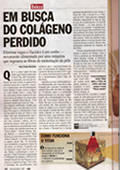
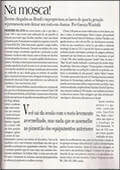


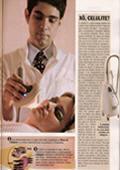


 Dr. Rokhsar was chosen by
Dr. Rokhsar was chosen by 






